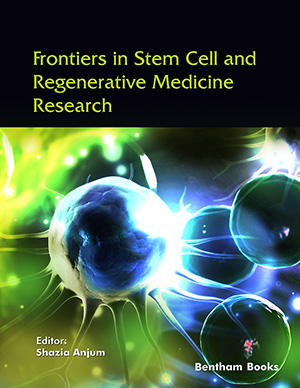
Abstract
Trace metals can be divided into two subgroups considering their pathophysiological effects: the first consists of microelements essential for life (arsenic, cobalt, chromium, copper, fluorine, iron, iodine, manganese, molybdenum, nickel, selenium, silicon, tin, vanadium and zinc), implicated in important metabolic processes; the second includes toxic microelements, such as cadmium (Cd), mercury (Hg), chromium (Cr), and lead (Pb) for living organisms, even at low concentrations. These metals contribute to serious consequences for human health, including male infertility. Studies performed in several in vitro and in vivo models revealed that environmental exposure to toxic pollutants, as heavy metals, negatively affects human male fertility. Stem cells, due to their ability to self-renew and differentiate in several cell types, have been proposed as a useful tool in assisted reproductive technology, permitting the spermatogenesis recovery in patients with irreversible infertility. Considering the effects of heavy metals on male fertility and, from a demographic point of view, the decreased fertility ratio, further strategies are required to maintain a sustainable turn-over of 2 children for woman. We discuss here the findings on the biological effects of heavy metal pollution in the male fertility and underline the related socioeconomic impact on population demography.
Keywords: Heavy metal pollution, male infertility, stem cells, clinical biochemistry and molecular clinical biology, demographic transition, green economy, gross domestic product (GDP).
[http://dx.doi.org/10.3109/17435390.2011.579630] [PMID: 21574799]
[http://dx.doi.org/10.1038/jes.2012.38] [PMID: 22569206]
[PMID: 30837718]
[http://dx.doi.org/10.3390/ijerph18168500] [PMID: 34444249]
[PMID: 32681630]
[http://dx.doi.org/10.1289/ehp.93101378] [PMID: 8080506]
[http://dx.doi.org/10.1080/10937400490253229] [PMID: 14681080]
[http://dx.doi.org/10.1016/0022-4731(86)90029-4] [PMID: 3009987]
[http://dx.doi.org/10.1002/jbt.22823] [PMID: 34051019]
[http://dx.doi.org/10.1016/j.fertnstert.2007.12.035] [PMID: 18308070]
[http://dx.doi.org/10.1016/S0022-5347(17)38662-7] [PMID: 2499695]
[http://dx.doi.org/10.1016/j.rbmo.2014.09.018] [PMID: 25456164]
[PMID: 25015612]
[PMID: 22801280]
[http://dx.doi.org/10.1093/biolre/ioz053] [PMID: 30927418]
[http://dx.doi.org/10.18632/oncotarget.20992] [PMID: 29262668]
[http://dx.doi.org/10.1111/andr.12741] [PMID: 31823507]
[http://dx.doi.org/10.1038/s41467-020-19350-3] [PMID: 33168808]
[http://dx.doi.org/10.1093/eep/dvz011] [PMID: 31463083]
[http://dx.doi.org/10.1007/978-3-319-31254-5_7]
[http://dx.doi.org/10.1093/humrep/dev139] [PMID: 26082482]
[http://dx.doi.org/10.1093/humupd/dmz028] [PMID: 31665451]
[PMID: 25864763]
[http://dx.doi.org/10.2138/rmg.2006.64.3]
[PMID: 22945569]
[http://dx.doi.org/10.1007/978-3-7643-8338-1_11] [PMID: 20358690]
[http://dx.doi.org/10.1007/s00216-002-1707-y] [PMID: 12733018]
[http://dx.doi.org/10.1016/j.cotox.2019.09.005]
[http://dx.doi.org/10.1016/j.reprotox.2017.07.021] [PMID: 28774687]
[PMID: 24152845]
[http://dx.doi.org/10.1016/j.reprotox.2009.08.001] [PMID: 19695322]
[http://dx.doi.org/10.1093/toxsci/kfr232] [PMID: 21908765]
[http://dx.doi.org/10.1016/j.canlet.2009.01.023] [PMID: 19232459]
[http://dx.doi.org/10.1177/153537020122600615] [PMID: 11395933]
[http://dx.doi.org/10.1016/j.envint.2021.106622] [PMID: 34030075]
[http://dx.doi.org/10.1038/s41598-021-91554-z] [PMID: 34099845]
[http://dx.doi.org/10.1136/bmj.305.6854.609] [PMID: 1393072]
[http://dx.doi.org/10.1016/j.mce.2011.05.048] [PMID: 22138051]
[http://dx.doi.org/10.1016/j.rbmo.2013.02.005] [PMID: 23510680]
[http://dx.doi.org/10.1080/15287390252807975] [PMID: 11939709]
[http://dx.doi.org/10.1111/j.1439-0272.1989.tb02384.x] [PMID: 2712368]
[http://dx.doi.org/10.1530/rep.0.1250769] [PMID: 12773099]
[http://dx.doi.org/10.1016/j.toxlet.2011.05.233] [PMID: 21605642]
[http://dx.doi.org/10.1002/tera.1420320314] [PMID: 4082073]
[PMID: 11862611]
[http://dx.doi.org/10.1006/taap.1993.1123] [PMID: 7687796]
[PMID: 19161232]
[PMID: 13951276]
[http://dx.doi.org/10.1155/2014/240642] [PMID: 24701565]
[http://dx.doi.org/10.1146/annurev-animal-021419-083813] [PMID: 35167321]
[http://dx.doi.org/10.7150/ijms.4998] [PMID: 23055816]
[http://dx.doi.org/10.1177/0192623319831009] [PMID: 30898082]
[http://dx.doi.org/10.1002/(SICI)1096-9926(199603)53:3<185:AID-TERA6>3.0.CO;2-3] [PMID: 8761886]
[http://dx.doi.org/10.7150/ijms.7.267] [PMID: 20714437]
[http://dx.doi.org/10.1038/s41598-019-42603-1] [PMID: 30988375]
[http://dx.doi.org/10.1242/dmm.024547] [PMID: 26839397]
[http://dx.doi.org/10.1073/pnas.0406085102] [PMID: 15722412]
[http://dx.doi.org/10.1016/j.toxlet.2004.07.015] [PMID: 15501611]
[http://dx.doi.org/10.1262/jrd.2013-097] [PMID: 24492640]
[http://dx.doi.org/10.1161/01.ATV.20.1.80] [PMID: 10634803]
[http://dx.doi.org/10.1002/ar.21317] [PMID: 21337715]
[http://dx.doi.org/10.1016/0890-6238(96)00028-7] [PMID: 8738562]
[http://dx.doi.org/10.1289/ehp.8457207] [PMID: 6499806]
[http://dx.doi.org/10.1016/S0890-6238(00)00101-5] [PMID: 11099874]
[http://dx.doi.org/10.3390/biology10040295] [PMID: 33916859]
[http://dx.doi.org/10.1111/j.1365-2990.1992.tb00765.x] [PMID: 1579201]
[http://dx.doi.org/10.1016/S0892-0362(01)00150-7] [PMID: 11485838]
[http://dx.doi.org/10.4321/S0213-12852005000600003]
[http://dx.doi.org/10.1016/S0015-0282(16)47241-9] [PMID: 6873319]
[http://dx.doi.org/10.1016/S0890-6238(99)00019-2] [PMID: 10453911]
[http://dx.doi.org/10.1016/j.ntt.2014.01.006] [PMID: 24503215]
[PMID: 9432148]
[http://dx.doi.org/10.3109/19396368.2011.648821] [PMID: 22239078]
[http://dx.doi.org/10.1274/0916-7625-25.3.122]
[http://dx.doi.org/10.1093/humupd/dmk001] [PMID: 16446319]
[http://dx.doi.org/10.1002/9780470292549.ch18]
[http://dx.doi.org/10.1055/s-2006-952158] [PMID: 17123232]
[http://dx.doi.org/10.1002/bdrb.20216] [PMID: 20025046]
[http://dx.doi.org/10.1016/B978-0-12-386015-6.00038-X] [PMID: 22127253]
[http://dx.doi.org/10.1016/j.tibtech.2017.10.010] [PMID: 29153762]
[http://dx.doi.org/10.1002/jcb.24000] [PMID: 22109698]
[PMID: 31696459]
[http://dx.doi.org/10.1016/j.bbrc.2018.04.180] [PMID: 29705697]
[http://dx.doi.org/10.1371/journal.pone.0020887] [PMID: 21701582]
[http://dx.doi.org/10.1111/j.1349-7006.2010.01723.x] [PMID: 20849469]
[http://dx.doi.org/10.1093/icvts/ivs466] [PMID: 23190621]
[http://dx.doi.org/10.1093/ejcts/ezr117] [PMID: 22219420]
[http://dx.doi.org/10.1080/10408398.2017.1366892] [PMID: 28853916]
[http://dx.doi.org/10.1002/jcb.26905] [PMID: 30714188]
[http://dx.doi.org/10.1002/mc.20322] [PMID: 17562555]
[http://dx.doi.org/10.1038/471661a] [PMID: 21455183]
[http://dx.doi.org/10.1002/jcp.24548] [PMID: 24403005]
[http://dx.doi.org/10.1387/ijdb.031778lw] [PMID: 15470636]
[http://dx.doi.org/10.1006/excr.1999.4630] [PMID: 10502410]
[http://dx.doi.org/10.1016/j.bbabio.2008.12.018] [PMID: 19210954]
[http://dx.doi.org/10.1093/molehr/gax070] [PMID: 29304256]
[http://dx.doi.org/10.1016/0012-1606(86)90237-X] [PMID: 3699244]
[http://dx.doi.org/10.2174/1871530320666200807121050] [PMID: 32767951]
[http://dx.doi.org/10.1093/molehr/gax063] [PMID: 29294090]
[http://dx.doi.org/10.1016/j.mito.2010.04.005] [PMID: 20433953]
[http://dx.doi.org/10.1088/1758-5090/ab1452] [PMID: 30921781]
[http://dx.doi.org/10.3390/jcm9092774]
[http://dx.doi.org/10.1021/bi00267a025] [PMID: 6217835]
[http://dx.doi.org/10.1073/pnas.1000318107] [PMID: 20498064]
[http://dx.doi.org/10.1016/j.ygcen.2014.03.030] [PMID: 24717811]
[http://dx.doi.org/10.1530/REP-16-0013] [PMID: 27512121]
[http://dx.doi.org/10.1074/mcp.M800258-MCP200] [PMID: 18952599]
[http://dx.doi.org/10.1088/1758-5090/ab9907] [PMID: 32492667]
[http://dx.doi.org/10.18632/oncotarget.16300] [PMID: 28415812]
[http://dx.doi.org/10.1016/S0002-9440(10)62367-X] [PMID: 15855650]
[http://dx.doi.org/10.1093/humrep/deu330] [PMID: 25505010]
[http://dx.doi.org/10.1016/j.stemcr.2016.11.012] [PMID: 28017656]
[http://dx.doi.org/10.1016/j.bbamcr.2013.12.017] [PMID: 24389246]
[http://dx.doi.org/10.14573/altex.2013.3.353] [PMID: 23861079]
[http://dx.doi.org/10.1016/0960-0760(91)90328-3] [PMID: 1851630]
[http://dx.doi.org/10.1155/2020/8835813] [PMID: 33101420]
[http://dx.doi.org/10.1155/2021/9978837] [PMID: 34012469]
[http://dx.doi.org/10.18632/oncotarget.17216] [PMID: 28477013]
[http://dx.doi.org/10.1073/pnas.91.24.11298] [PMID: 7972053]
[http://dx.doi.org/10.1080/14712598.2018.1380622] [PMID: 28927307]
[http://dx.doi.org/10.1073/pnas.1932826100] [PMID: 14504407]
[http://dx.doi.org/10.1089/ars.2006.8.495] [PMID: 16677093]
[http://dx.doi.org/10.1002/stem.13] [PMID: 19350678]
[http://dx.doi.org/10.1186/s12958-015-0121-1] [PMID: 26553338]
[http://dx.doi.org/10.32604/biocell.2022.018409]
[http://dx.doi.org/10.1016/S1472-6483(10)60052-1] [PMID: 19573297]
[http://dx.doi.org/10.1007/s11626-016-0073-6] [PMID: 27503516]
[PMID: 25810872]
[http://dx.doi.org/10.1155/2013/529589] [PMID: 23509736]
[http://dx.doi.org/10.15283/ijsc.2015.8.2.134] [PMID: 26634062]
[http://dx.doi.org/10.1016/S2095-3119(13)60249-X]
[http://dx.doi.org/10.3892/mmr.2015.3528] [PMID: 25815600]
[PMID: 30840286]
[http://dx.doi.org/10.1155/2017/7617048] [PMID: 28769982]
[PMID: 31002142]
[http://dx.doi.org/10.1016/j.stem.2016.01.017] [PMID: 26923202]
[http://dx.doi.org/10.2174/1871530318666180423102905] [PMID: 29692270]
[http://dx.doi.org/10.1155/2020/9587971] [PMID: 32684934]
[http://dx.doi.org/10.1093/hmg/ddq520] [PMID: 21131292]
[http://dx.doi.org/10.1002/stem.1012] [PMID: 22162380]
[http://dx.doi.org/10.1093/humrep/dey373] [PMID: 30753464]
[http://dx.doi.org/10.1093/hmg/ddu012] [PMID: 24449759]
[http://dx.doi.org/10.7150/ijms.24111] [PMID: 30008608]
[http://dx.doi.org/10.1016/j.fertnstert.2015.12.020] [PMID: 26746133]
[http://dx.doi.org/10.1007/s00204-005-0046-0] [PMID: 16307232]
[http://dx.doi.org/10.3889/oamjms.2015.048] [PMID: 27275249]
[http://dx.doi.org/10.1186/s12958-015-0032-1] [PMID: 25928197]
[http://dx.doi.org/10.1002/bse.2681]
[http://dx.doi.org/10.3390/nu12092648] [PMID: 32878054]
[http://dx.doi.org/10.1007/s00404-011-2138-9] [PMID: 22113463]
[http://dx.doi.org/10.2174/1573401316999200504093028]
[http://dx.doi.org/10.1111/j.1743-6109.2011.02515.x] [PMID: 22023797]
[PMID: 29256350]
[http://dx.doi.org/10.1177/01926233221095449] [PMID: 35535728]
 66
66 3
3




























